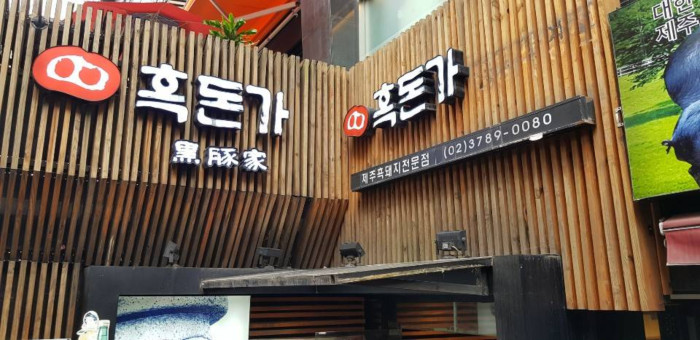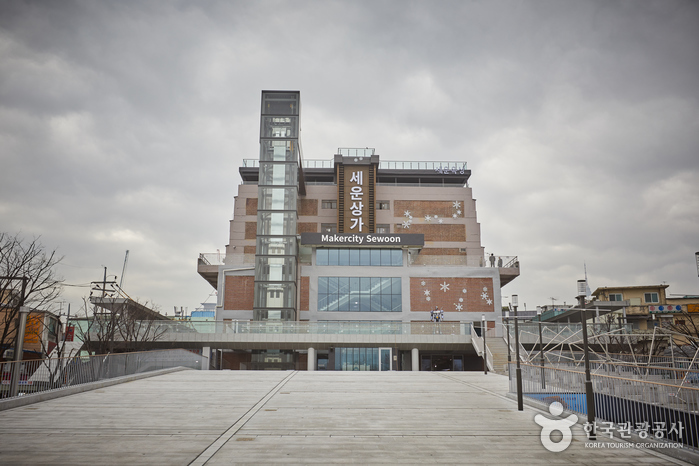Piaget - Lotte Avenuel Branch [Tax Refund Shop] (피아제 롯데 에비뉴엘점)
8.8Km 2024-04-18
73, Namdaemun-ro, Jung-gu, Seoul
-
IWC - Lotte Avenuel Branch [Tax Refund Shop] (아이더블유씨 롯데에비뉴엘점)
8.8Km 2024-04-18
2F, 73, Namdaemun-ro, Jung-gu, Seoul
-
Vacheron Constantin - Lotte Avenuel Branch [Tax Refund Shop] (바쉐론콘스탄틴 롯데 에비뉴엘점)
8.8Km 2024-04-23
73, Namdaemun-ro, Jung-gu, Seoul
-
Chopard - Lotte Avenuel Branch [Tax Refund Shop] (쇼파드 롯데 에비뉴엘)
8.8Km 2024-04-18
2F, 73, Namdaemun-ro, Jung-gu, Seoul
-
Panerai - Lotte Avenuel Branch [Tax Refund Shop] (파네라이 롯데 에비뉴엘점)
8.8Km 2024-04-18
2F, 73, Namdaemun-ro, Jung-gu, Seoul
-
Chaumet - Lotte Avenuel Branch [Tax Refund Shop] (쇼메 롯데에비뉴엘점)
8.8Km 2024-04-23
3F, 73, Namdaemun-ro, Jung-gu, Seoul
-
MyungBo Inc - Lotte Avenuel Branch [Tax Refund Shop] (명보아이앤씨 에비뉴엘)
8.8Km 2024-06-27
73, Namdaemun-ro, Jung-gu, Seoul
-
Heukdonga Myeongdong (흑돈가 명동)
8.8Km 2024-03-07
21, Myeongdong, 7-gil, Jung-gu, Seoul
+82-2-3789-0080
Situated in Myeongdong, Heukdonga focuses on Jeju-style grilled black pork. Once black pork cut into thick chunks are grilled over charcoal, it is ready to be served with salted anchovies or pickled perilla leaves. The meat is grilled on a wire mesh over charcoal, which renders the fat and gives it a nice charcoal flavor. After finishing the meat, patrons have the option to soybean paste jjigae with rice or cold buckwheat noodles, which are also a must-try in Korean barbecue restaurants.
Sewoon Plaza (세운전자상가(세운전자플라자))
8.8Km 2023-11-23
159 Cheonggyecheon-ro, Jongno-gu, Seoul
+82-2-2271-2344
Sewoon Plaza, also known as Sewoon Electronics Plaza, was famous for electronic goods as the sole electronics shop before Yongsan Electronics Department Store was built. The scale doesn’t meet that of Yongsan Mall but its location in the heart of downtown Seoul as well as their 10 years of fame have worked to keep a strong customer base.
The department store is divided into two buildings along Cheonggyecheon-ro. Most of the electornics are available on the first building. On the first floor, home and lifestyle electronic goods including irons, hair dryers, telephones, razors as well as gas stoves, various heaters, kitchen tools and more are sold. On the second floor, visitors can find televisions, fridges, laundry machines, audio & video devices. On the third floor, newlyweds can buy their electronic goods and appliances for the kitchen. Also, computers and related devices and parts are available on the fourth floor. The price range here is relatively cheaper than the regular consumer price.
Myth Jokbal Myeongdong (미쓰족발명동)
8.8Km 2024-10-15
21, Myeongdong 3-gil, Jung-gu, Seoul
+82-2-3789-8799
This restaurant specializes in Jokbal (Braised pigs' feet) and Bossam (Napa wraps with pork), both of which are served with vegetable wraps and salad. Jokbal (Braised pigs’ feet) is prepared by braising pigs' feet in spiced stock, a process that removes excess fat, enhances the flavor, and gives the meat a chewier texture. Each order of Jokbal (Braised pigs' feet) is accompanied by Kongnamulkimchiguk (Bean sprout and kimchi soup), to which Kalguksumyeon (Noodles) are added. For those who find the dishes too spicy, the restaurant offers a self-serve Jumeokbap (Riceball), featuring laver flakes, pickled radish, and mayonnaise to cool the palate.
![Piaget - Lotte Avenuel Branch [Tax Refund Shop] (피아제 롯데 에비뉴엘점)](http://tong.visitkorea.or.kr/cms/resource/72/2889872_image2_1.jpg)
![IWC - Lotte Avenuel Branch [Tax Refund Shop] (아이더블유씨 롯데에비뉴엘점)](http://tong.visitkorea.or.kr/cms/resource/31/2889931_image2_1.jpg)
![Vacheron Constantin - Lotte Avenuel Branch [Tax Refund Shop] (바쉐론콘스탄틴 롯데 에비뉴엘점)](http://tong.visitkorea.or.kr/cms/resource/01/2890101_image2_1.jpg)
![Chopard - Lotte Avenuel Branch [Tax Refund Shop] (쇼파드 롯데 에비뉴엘)](http://tong.visitkorea.or.kr/cms/resource/10/2890310_image2_1.jpg)
![Panerai - Lotte Avenuel Branch [Tax Refund Shop] (파네라이 롯데 에비뉴엘점)](http://tong.visitkorea.or.kr/cms/resource/42/2890442_image2_1.jpg)
![Chaumet - Lotte Avenuel Branch [Tax Refund Shop] (쇼메 롯데에비뉴엘점)](http://tong.visitkorea.or.kr/cms/resource/65/2890465_image2_1.jpg)
![MyungBo Inc - Lotte Avenuel Branch [Tax Refund Shop] (명보아이앤씨 에비뉴엘)](http://tong.visitkorea.or.kr/cms/resource/62/3314562_image2_1.jpg)


 English
English
 한국어
한국어 日本語
日本語 中文(简体)
中文(简体) Deutsch
Deutsch Français
Français Español
Español Русский
Русский